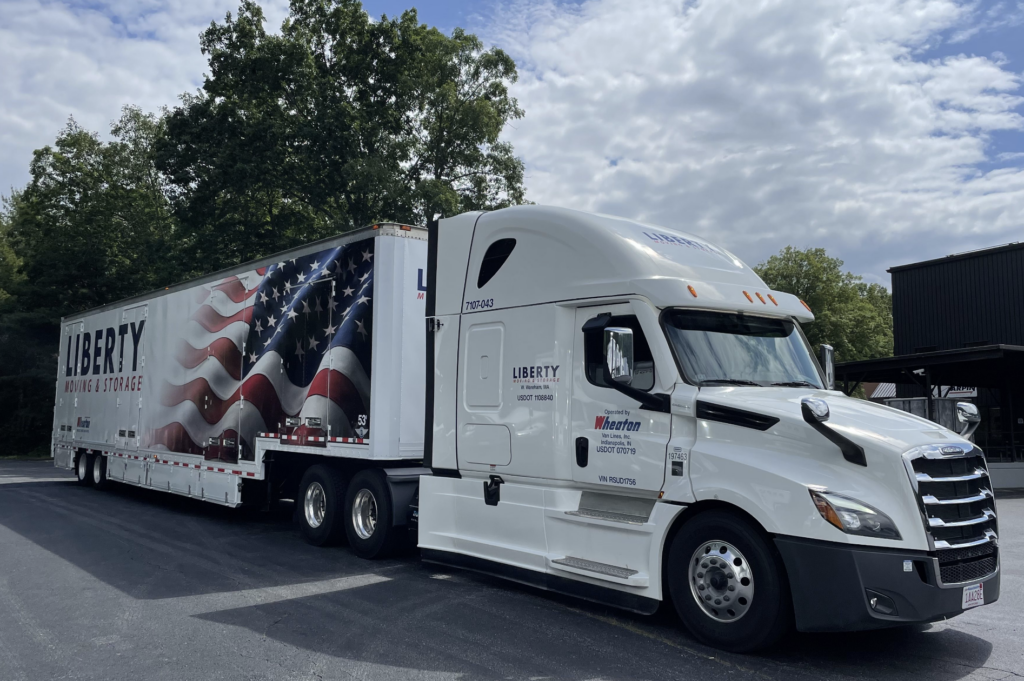Liberty Moving and Storage has been moving apartments since 1930. During that time, our overriding objective has always been to provide two things to our customers; great service and great value, a.k.a., keeping costs as low as possible. Long-distance apartment and condo moves (interstate) and local apartment moves (across town) have two totally different pricing mechanisms and achieving cost savings are completely different for each.
Long-distance moves are basically priced by weight and time has no real bearing on the overall cost of the move. Local moves on the other hand are basically priced by time and weight has no bearing on the overall cost (except that more weight usually means more time…but not always). Reducing cost on an interstate apartment/condo move is relatively straightforward, lower the shipment weight and you lower the price. Sell items, give items away, throw them out, or leave them behind, all accomplish the same goal of reducing the overall shipment weight, and therefore reducing your overall moving costs.
The phrase, “Time is money” is attributed to the great statesmen Benjamin Franklin. In terms of local apartment moving, no other business concept is more accurate for determining your overall cost; more time spent by the movers means more money spent by you, and vice versa. That said, reducing the expense of a local apartment or condo move is accomplished by spending your time to save the movers time. Keep in mind that shaving seconds off activities that the movers will perform often will save them hours in the end, and along with that, most likely save you hundreds of dollars.
To understand the mechanics of your move, you have to walk in the shoes of the movers; literally. Ask you building management where the trucks will park, or “must” park when moving. Many times, movers are not allowed to use the same main entrances that you do, so it’s always best to investigate where they will be working. Go to that spot in your complex or building and time how long it takes to get back to your apartment; then double it. This is the total time for one crew member to make one round trip. Considering that the aggregate costs of the truck, crew, fuel, insurance, and etc., the cost is about $1.00 per minute per man, reducing the number of trips they need to take and the speed of their remaining trips is where you will get your greatest cost reduction. Here are the best practices for organizing an efficient apartment move that are used by Liberty Moving and Storage.
Pre-move and facility recommendations:
- Ensure that your exact address is verified. Include the building number, apartment number, floor, wing, description, or any other direction that will allow the movers to find you immediately. Ensure that the exact location and or direction to where the truck is to load or unload is communicated to Liberty before the movers arrive so it can be positioned quickly. It it’s not a bad idea to stay outside and flag down the movers as they drive up; especially in larger complexes.
- If the moving truck will block other tenant’s vehicles when it is being loaded or unloaded, ensure you post notices so your neighbors are aware of the move, and they can park elsewhere.
- If you are in a larger building, ensure you touch base with the building management so you’re aware of their moving ground rules and regulations well before moving day.
- If there is an elevator, make sure it is reserved for your use and the building maintenance personnel have installed the wall protection already. If the elevator requires a by-pass key to operate, ensure you already have it in your possession so you can give it to the movers.
- If there are doors that the movers need to travel through, ensure there are wooden or plastic door stops available to prop them open; especially the door to your apartment. In larger facilities, ensure that all walkways and service areas are free of garbage, junk, or maintenance equipment.
Packing and preparation recommendations:
- Avoid having many small items and small cartons; your goal is to have the fewest items to move. On level ground, a professional mover can carry boxes with weights totaling 100 lbs. or more. These boxes can have a volume up to six cubic feet (the equivalent of two large laundry baskets). If they’re moving up and down stairs, reduce that by 25% to 75 lbs. and 4.5 cubic feet. It is better to consolidate all smaller items into the largest cartons possible to minimize trips. If your building has an elevator, the weight of cartons can be ignored since the movers won’t be carrying anything, they will roll everything on dollies. Clothing wardrobes are great for elevator moves; they’re huge and can hold a lot, they’re sturdy, and they’re easy to handle because they have handles.
- Ensure everything that you’ll be transporting yourself, purses, bags, suitcases, are out of the apartment and into your locked vehicle before the movers arrive. No exceptions!
- Ensure every item that needs to be disassembled such as mirrors on dressers, beds, tables, and etc., are fully disassembled and the parts packed or connected to the items itself in bags.
- Ensure everything is FULLY packed in cartons and properly labeled with your name and the room it goes into so the movers can self-direct themselves.
Last but not least, be 100% ready when the movers arrive. Don’t leave packing and organizational tasks until moving day. That will only delay the movers and result in unnecessary expenditures. Start the packing, sorting, and purging process early so you have the maximum time to prepare well. If you hold up your end of the bargain by being fully ready to go on moving day, Liberty Moving and Storage will reciprocate with a well serviced move that is at or below budget.

